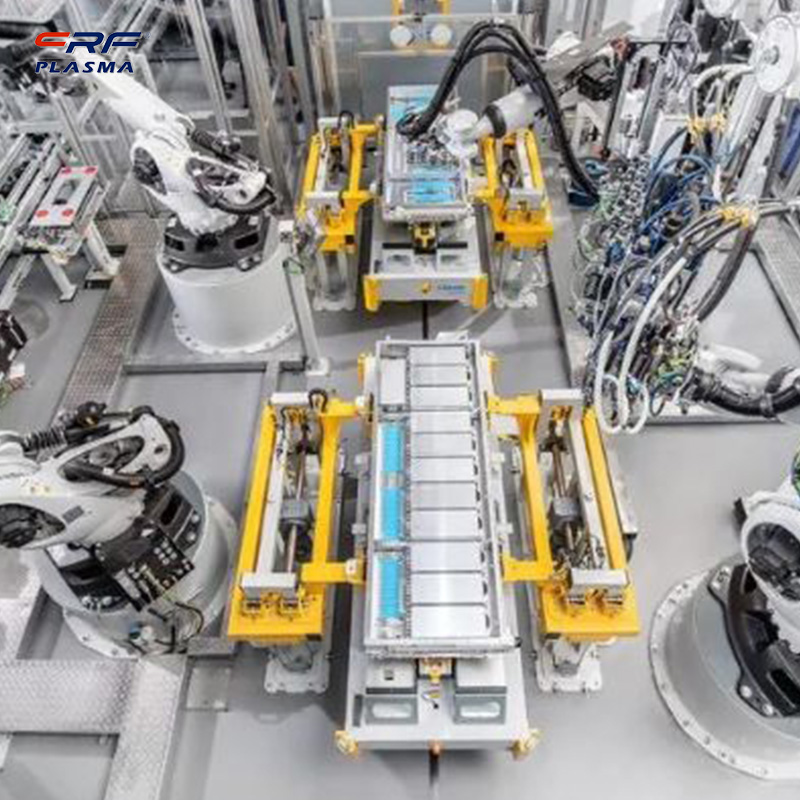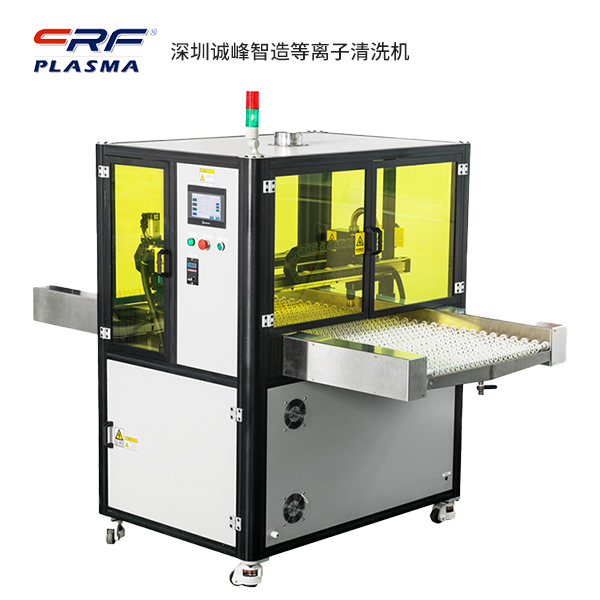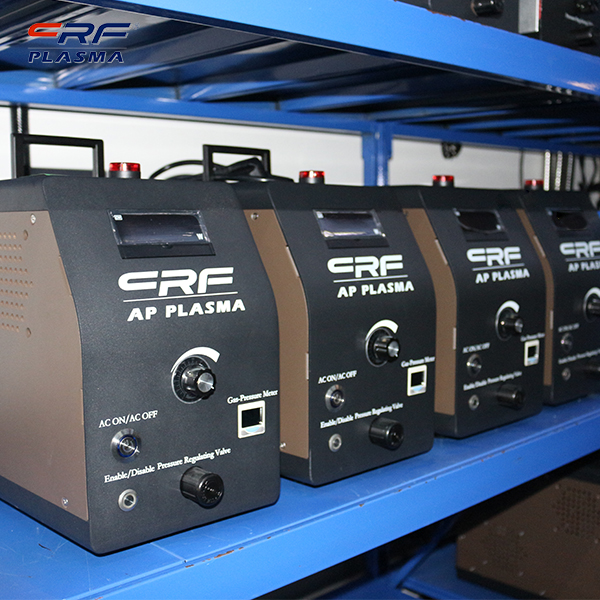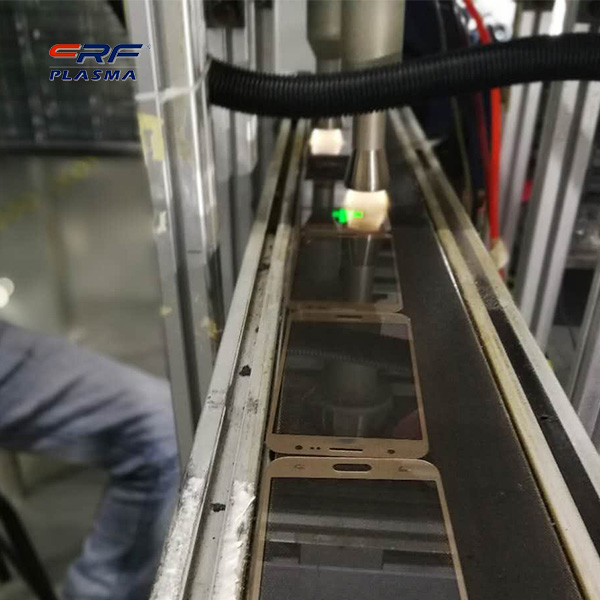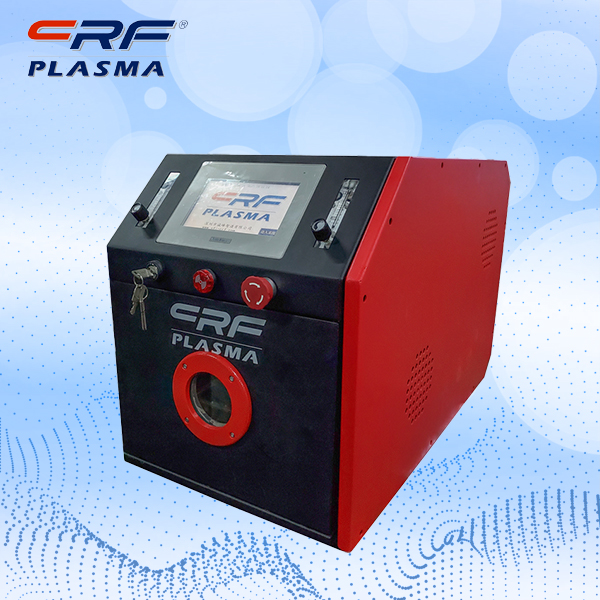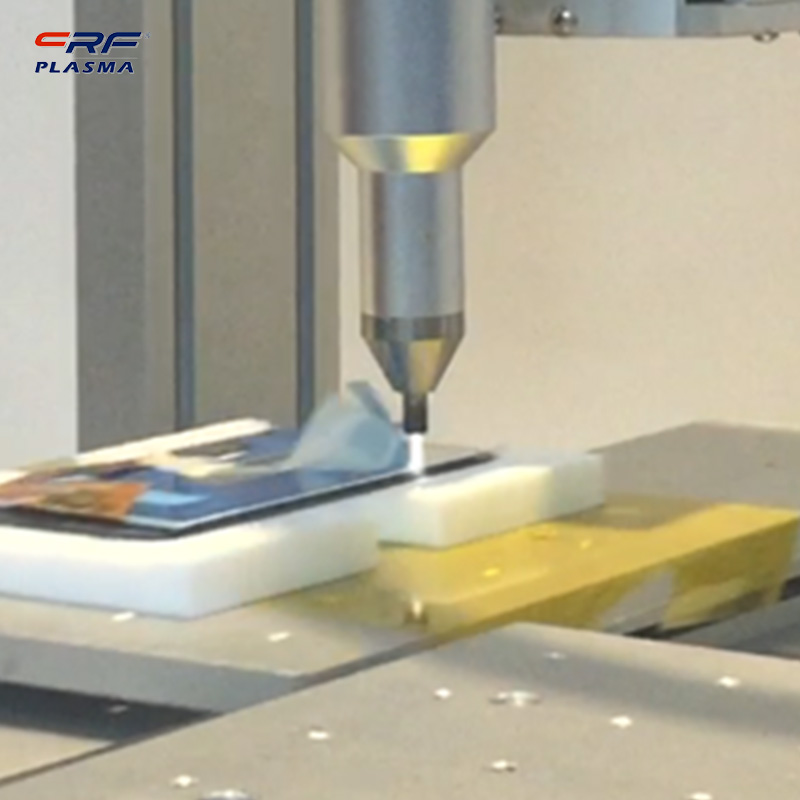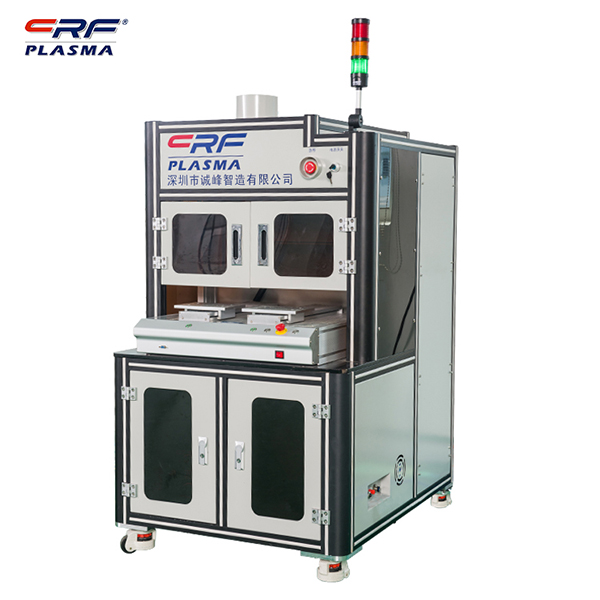
Welcome to Shenzhen Sing Fung Intelligent Manufacturing Co., Ltd.
E-mail:shaobo@sfi-crf.com
Plasma surface modification equipment treatment to improve the corrosion resistance of biological scientific research metals
- Categories:Company Dynamics
- Author:Plasma cleaning machine-CRF plasma plasma equipment-plasma surface treatment machine manufacturer-chengfeng intelligent manufacturing
- Origin:
- Time of issue:2022-04-05
- Views:
(Summary description)Plasma surface modification equipment treatment to improve the corrosion resistance of biological scientific research metals: Surface modification of metal materials by biomedical chemical methods is a new type of new technology developed in recent years. This method is based on the following assumptions: the biologically active substances are directly attached to the metal substrate, and the macromolecular protein or enzyme-like organic polymer materials are introduced to the surface of the substrate, so that they have better biological activity and are more direct and effective. Once the metal materials in the organic matter are corroded, the corrosion products produced by the dissolved metal ions will cause adverse effects on the human body, so it must be controlled. Studies have shown that metal materials themselves will not cause allergies to the human body. However, the dissolved metal ions or dissolved ions in the form of metal salts combine with biological molecules or form abrasive dust, which may cause harm to the human body. In addition, the fracture of human metal materials is mostly caused by fatigue and friction fatigue, and these two factors are not simple factors, but are actually caused by corrosion fatigue, which is closely related to corrosion. In order to prevent the toxicity of metals in the body, improve the safety of metal materials, and prolong their service life, it is of great significance to study the corrosion of metal materials with plasma surface modification equipment in the field of biological science research. Some researchers have treated metal surfaces with NH3 and N2 plasmas to enter amino groups, which are then quaternized by reaction with methyl iodide, and then use the negatively charged anticoagulant heparin to form the quaternized amino groups on the metal surface. complexes, thereby immobilizing heparin on metal surfaces. The nitrogen groups formed on the metal surface can also be used to immobilize proteins, and the surface of most metal materials is immobilized by attaching a layer of hydrophilic macromolecular film. Under certain conditions, it will interact with [H] or H- to form hydroxyl (-OH), which adheres to the surface of the substrate, in this case APS (An1inopropyltriethox-ysi-lane) plasma, and then passes through glutaryl The action of acid aldehyde (An1inopropyltriethox-ysi-lane) can chemically bond proteins or enzyme isolates such as trypsin to the substrate surface. The method can fix biomolecules on the surface of metal, inorganic, non-porous and non-loose biological materials, so that the surface activity of the materials is greatly improved. Most of the metal substrates, such as Ti, Ti6Al4V, Co-Cr-Mo, TiTa30, etc., can be modified by plasma grafting of organic matter plasma surface modification equipment, so that biomolecules can be directly adsorbed on the surface. Artificial biomaterials used for transplantation, tissue culture or other purposes must have good biocompatibility with the biological environment. Currently, when developing biocompatible surfaces to adhere cells, the main focus is on the surface immobilization of ECM proteins and metal substrates, while techniques for surface modification of materials that do not require adherent cells, such as blood cells, are the fabrication of high Inert surfaces, such as fluorohydrocarbons, or biologically active molecules prevent cell fixation, or generate highly hydrophilic groups, etc. Most of the medical stainless steels commonly used in clinical practice now contain nickel elements. For example, the nickel content in medical 316l stainless steel is 10~14. As a potential sensitizer, the toxic effects of nickel ions in the human body due to corrosion, abrasion, precipitation, and accumulation can cause cell destruction and inflammatory responses. Similarly, cobalt and nickel elements in medical cobalt-based alloys also have greater sensitization. However, V and Al in titanium alloys are harmful to organisms. This makes the application of metal biomaterials limited to a certain extent. In order to enable the implanted metal biomaterials to fully exert their functions, they can be surface-modified by plasma surface modification equipment, such as using low-temperature plasma to graft polymer films on the surface of stainless steel, or using cobalt-based alloys. The TiO2 film grafted on the surface of the titanium alloy and the surface of the titanium alloy by the bioscience plasma grafting plasma surface treatment equipment can effectively prevent the precipitation of nickel ions and improve the effect of the ion precipitation of the abrasive products on the surface of the nickel-based alloy and the titanium alloy on the surrounding tissue of the implant. adverse reactions, greatly improving the safety of long-term use of biological implant materials.
Plasma surface modification equipment treatment to improve the corrosion resistance of biological scientific research metals
(Summary description)Plasma surface modification equipment treatment to improve the corrosion resistance of biological scientific research metals:
Surface modification of metal materials by biomedical chemical methods is a new type of new technology developed in recent years. This method is based on the following assumptions: the biologically active substances are directly attached to the metal substrate, and the macromolecular protein or enzyme-like organic polymer materials are introduced to the surface of the substrate, so that they have better biological activity and are more direct and effective. Once the metal materials in the organic matter are corroded, the corrosion products produced by the dissolved metal ions will cause adverse effects on the human body, so it must be controlled. Studies have shown that metal materials themselves will not cause allergies to the human body. However, the dissolved metal ions or dissolved ions in the form of metal salts combine with biological molecules or form abrasive dust, which may cause harm to the human body. In addition, the fracture of human metal materials is mostly caused by fatigue and friction fatigue, and these two factors are not simple factors, but are actually caused by corrosion fatigue, which is closely related to corrosion. In order to prevent the toxicity of metals in the body, improve the safety of metal materials, and prolong their service life, it is of great significance to study the corrosion of metal materials with plasma surface modification equipment in the field of biological science research.
Some researchers have treated metal surfaces with NH3 and N2 plasmas to enter amino groups, which are then quaternized by reaction with methyl iodide, and then use the negatively charged anticoagulant heparin to form the quaternized amino groups on the metal surface. complexes, thereby immobilizing heparin on metal surfaces. The nitrogen groups formed on the metal surface can also be used to immobilize proteins, and the surface of most metal materials is immobilized by attaching a layer of hydrophilic macromolecular film. Under certain conditions, it will interact with [H] or H- to form hydroxyl (-OH), which adheres to the surface of the substrate, in this case APS (An1inopropyltriethox-ysi-lane) plasma, and then passes through glutaryl The action of acid aldehyde (An1inopropyltriethox-ysi-lane) can chemically bond proteins or enzyme isolates such as trypsin to the substrate surface. The method can fix biomolecules on the surface of metal, inorganic, non-porous and non-loose biological materials, so that the surface activity of the materials is greatly improved. Most of the metal substrates, such as Ti, Ti6Al4V, Co-Cr-Mo, TiTa30, etc., can be modified by plasma grafting of organic matter plasma surface modification equipment, so that biomolecules can be directly adsorbed on the surface. Artificial biomaterials used for transplantation, tissue culture or other purposes must have good biocompatibility with the biological environment. Currently, when developing biocompatible surfaces to adhere cells, the main focus is on the surface immobilization of ECM proteins and metal substrates, while techniques for surface modification of materials that do not require adherent cells, such as blood cells, are the fabrication of high Inert surfaces, such as fluorohydrocarbons, or biologically active molecules prevent cell fixation, or generate highly hydrophilic groups, etc.
Most of the medical stainless steels commonly used in clinical practice now contain nickel elements. For example, the nickel content in medical 316l stainless steel is 10~14. As a potential sensitizer, the toxic effects of nickel ions in the human body due to corrosion, abrasion, precipitation, and accumulation can cause cell destruction and inflammatory responses. Similarly, cobalt and nickel elements in medical cobalt-based alloys also have greater sensitization. However, V and Al in titanium alloys are harmful to organisms. This makes the application of metal biomaterials limited to a certain extent. In order to enable the implanted metal biomaterials to fully exert their functions, they can be surface-modified by plasma surface modification equipment, such as using low-temperature plasma to graft polymer films on the surface of stainless steel, or using cobalt-based alloys. The TiO2 film grafted on the surface of the titanium alloy and the surface of the titanium alloy by the bioscience plasma grafting plasma surface treatment equipment can effectively prevent the precipitation of nickel ions and improve the effect of the ion precipitation of the abrasive products on the surface of the nickel-based alloy and the titanium alloy on the surrounding tissue of the implant. adverse reactions, greatly improving the safety of long-term use of biological implant materials.
- Categories:Company Dynamics
- Author:Plasma cleaning machine-CRF plasma plasma equipment-plasma surface treatment machine manufacturer-chengfeng intelligent manufacturing
- Origin:
- Time of issue:2022-04-05 17:42
- Views:
Plasma surface modification equipment treatment to improve the corrosion resistance of biological scientific research metals:
Surface modification of metal materials by biomedical chemical methods is a new type of new technology developed in recent years. This method is based on the following assumptions: the biologically active substances are directly attached to the metal substrate, and the macromolecular protein or enzyme-like organic polymer materials are introduced to the surface of the substrate, so that they have better biological activity and are more direct and effective. Once the metal materials in the organic matter are corroded, the corrosion products produced by the dissolved metal ions will cause adverse effects on the human body, so it must be controlled. Studies have shown that metal materials themselves will not cause allergies to the human body. However, the dissolved metal ions or dissolved ions in the form of metal salts combine with biological molecules or form abrasive dust, which may cause harm to the human body. In addition, the fracture of human metal materials is mostly caused by fatigue and friction fatigue, and these two factors are not simple factors, but are actually caused by corrosion fatigue, which is closely related to corrosion. In order to prevent the toxicity of metals in the body, improve the safety of metal materials, and prolong their service life, it is of great significance to study the corrosion of metal materials with plasma surface modification equipment in the field of biological science research.
Some researchers have treated metal surfaces with NH3 and N2 plasmas to enter amino groups, which are then quaternized by reaction with methyl iodide, and then use the negatively charged anticoagulant heparin to form the quaternized amino groups on the metal surface. complexes, thereby immobilizing heparin on metal surfaces. The nitrogen groups formed on the metal surface can also be used to immobilize proteins, and the surface of most metal materials is immobilized by attaching a layer of hydrophilic macromolecular film. Under certain conditions, it will interact with [H] or H- to form hydroxyl (-OH), which adheres to the surface of the substrate, in this case APS (An1inopropyltriethox-ysi-lane) plasma, and then passes through glutaryl The action of acid aldehyde (An1inopropyltriethox-ysi-lane) can chemically bond proteins or enzyme isolates such as trypsin to the substrate surface. The method can fix biomolecules on the surface of metal, inorganic, non-porous and non-loose biological materials, so that the surface activity of the materials is greatly improved. Most of the metal substrates, such as Ti, Ti6Al4V, Co-Cr-Mo, TiTa30, etc., can be modified by plasma grafting of organic matter plasma surface modification equipment, so that biomolecules can be directly adsorbed on the surface. Artificial biomaterials used for transplantation, tissue culture or other purposes must have good biocompatibility with the biological environment. Currently, when developing biocompatible surfaces to adhere cells, the main focus is on the surface immobilization of ECM proteins and metal substrates, while techniques for surface modification of materials that do not require adherent cells, such as blood cells, are the fabrication of high Inert surfaces, such as fluorohydrocarbons, or biologically active molecules prevent cell fixation, or generate highly hydrophilic groups, etc.
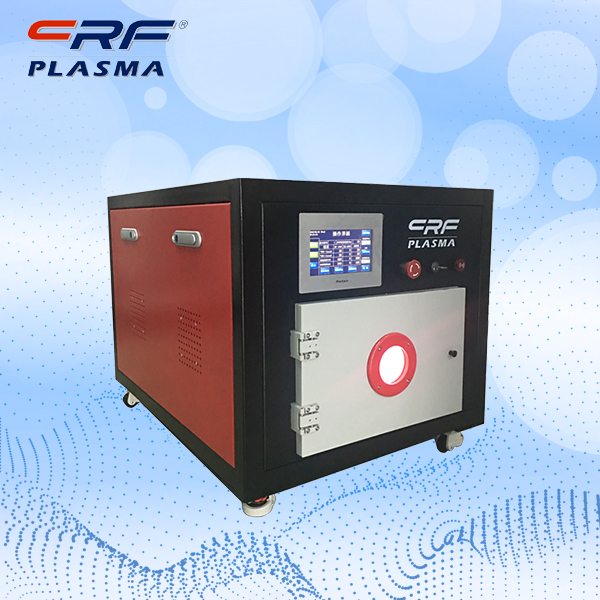 Most of the medical stainless steels commonly used in clinical practice now contain nickel elements. For example, the nickel content in medical 316l stainless steel is 10~14. As a potential sensitizer, the toxic effects of nickel ions in the human body due to corrosion, abrasion, precipitation, and accumulation can cause cell destruction and inflammatory responses. Similarly, cobalt and nickel elements in medical cobalt-based alloys also have greater sensitization. However, V and Al in titanium alloys are harmful to organisms. This makes the application of metal biomaterials limited to a certain extent. In order to enable the implanted metal biomaterials to fully exert their functions, they can be surface-modified by plasma surface modification equipment, such as using low-temperature plasma to graft polymer films on the surface of stainless steel, or using cobalt-based alloys. The TiO2 film grafted on the surface of the titanium alloy and the surface of the titanium alloy by the bioscience plasma grafting plasma surface treatment equipment can effectively prevent the precipitation of nickel ions and improve the effect of the ion precipitation of the abrasive products on the surface of the nickel-based alloy and the titanium alloy on the surrounding tissue of the implant. adverse reactions, greatly improving the safety of long-term use of biological implant materials.
Most of the medical stainless steels commonly used in clinical practice now contain nickel elements. For example, the nickel content in medical 316l stainless steel is 10~14. As a potential sensitizer, the toxic effects of nickel ions in the human body due to corrosion, abrasion, precipitation, and accumulation can cause cell destruction and inflammatory responses. Similarly, cobalt and nickel elements in medical cobalt-based alloys also have greater sensitization. However, V and Al in titanium alloys are harmful to organisms. This makes the application of metal biomaterials limited to a certain extent. In order to enable the implanted metal biomaterials to fully exert their functions, they can be surface-modified by plasma surface modification equipment, such as using low-temperature plasma to graft polymer films on the surface of stainless steel, or using cobalt-based alloys. The TiO2 film grafted on the surface of the titanium alloy and the surface of the titanium alloy by the bioscience plasma grafting plasma surface treatment equipment can effectively prevent the precipitation of nickel ions and improve the effect of the ion precipitation of the abrasive products on the surface of the nickel-based alloy and the titanium alloy on the surrounding tissue of the implant. adverse reactions, greatly improving the safety of long-term use of biological implant materials.
Scan the QR code to read on your phone

TEL:0755-3367 3020 / 0755-3367 3019

E-mail:sales-sfi@sfi-crf.com

ADD:Mabao Industrial Zone, Huangpu, Baoan District, Shenzhen




